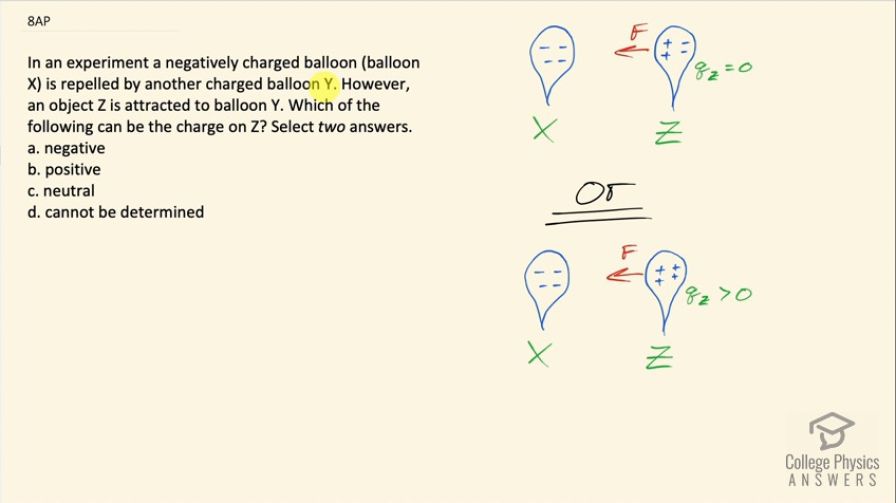Question
In an experiment a negatively charged balloon (balloon X) is repelled by another charged balloon Y. However, an object Z is attracted to balloon Y. Which of the following can be the charge on Z? Select two answers.
- negative
- positive
- neutral
- cannot be determined
Final Answer
(b) and (c)
Solution video
OpenStax College Physics for AP® Courses, Chapter 18, Problem 8 (Test Prep for AP® Courses)

vote with a rating of
votes with an average rating of
.
Video Transcript
This is College Physics Answers with Shaun Dychko. A negatively charged balloon called balloon X is repelled by another charged balloon Y so we know that Y is also negatively charged but object Z is attracted to balloon Y and we can talk about Z being attracted to balloon X as well because X and Y are both negatively charged since they repel each other and there are two scenarios here in which you have balloon Z being attracted to X or Y. You could have this scenario where the balloon Z is neutral— its charge is zero— in which case you would have an induced charge distribution where you would have the electrons on the side closest to balloon X being repelled to the opposite side exposing some protons here and these protons will experience an attraction to the negatively charged balloon X or balloon Z could be positively charged and have a net charge of, you know, more than zero in other words and this opposite positive charge will be attracted to the negative charge on X. So the answers are neutral or positive.